Genus Astacus Higher classification Astacus | ||
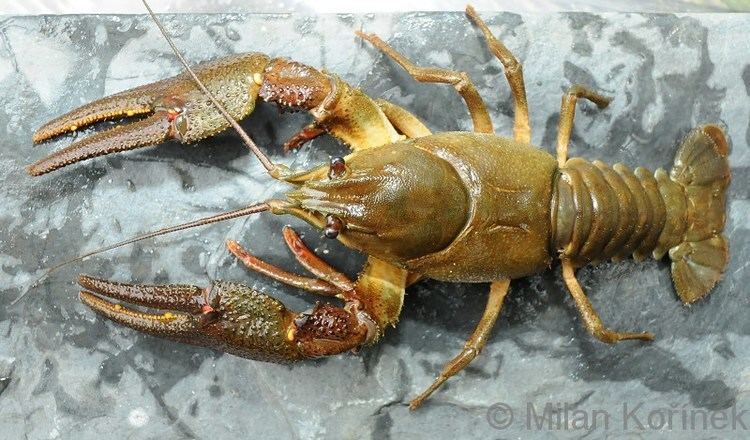 | ||
Similar Astacus, Signal crayfish, Crustacean, crayfish plague, Orconectes limosus | ||
Experimental pond astacus astacus edel krebs ecrevisse pattes rouges the noble crayfish
Astacus astacus, the European crayfish, noble crayfish or broad-fingered crayfish, is the most common species of crayfish in Europe, and a traditional food source. Like other true crayfish, Astacus astacus is restricted to fresh water, living only in unpolluted streams, rivers and lakes. It is found from France throughout Central Europe, to the Balkan Peninsula, and north as far as parts of the British Isles, Scandinavia, and Eastern Europe. Males may grow up to 16 cm long, and females up to 12 cm.
Contents
- Experimental pond astacus astacus edel krebs ecrevisse pattes rouges the noble crayfish
- Astacus astacus ii
- Ecology
- Consumption
- Astacin
- References
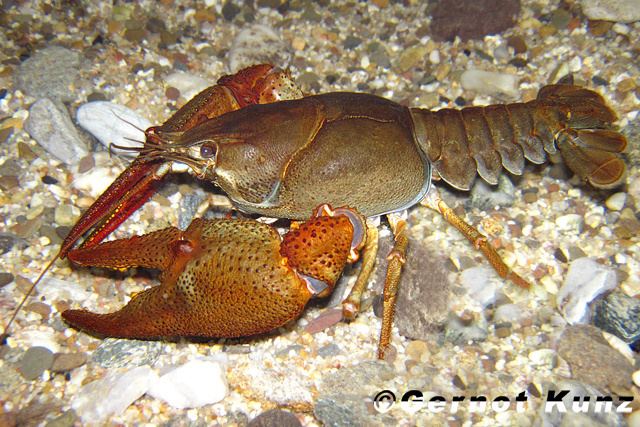
Astacus astacus ii
Ecology
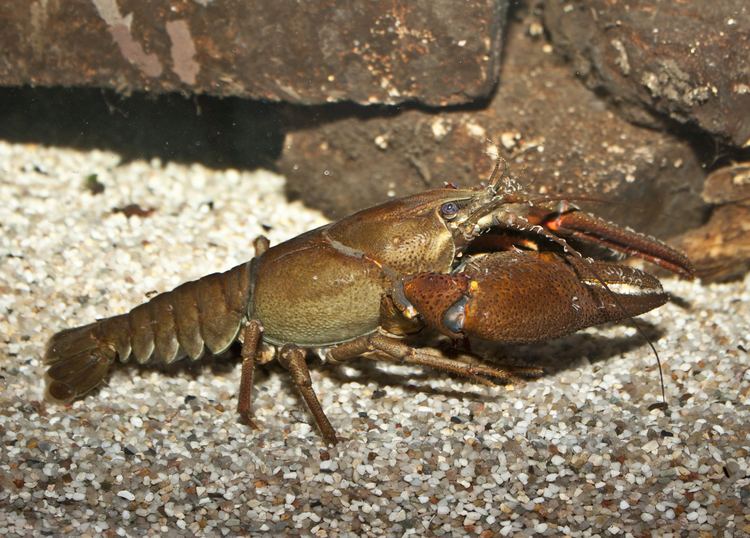
A. astacus is nocturnal and feeds on worms, aquatic insects, molluscs and plants, spending the day resting in a burrow. They become sexually mature after three to four years and a series of moults, and breed in October and November. Fertilised eggs are carried by the female, attached to her pleopods, until the following May, when they hatch and disperse. The main predators of A. astacus, both as juveniles and adults, are mink, eels, perch, pike, otters, and muskrats.
Consumption
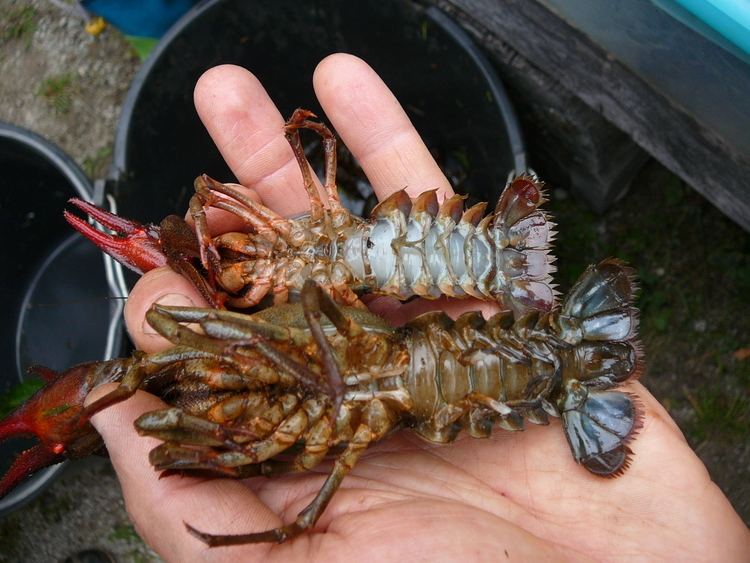
Astacus astacus was once abundant in Europe, although it was expensive to buy, and is considered to be the finest edible crayfish. It is, however, susceptible to the crayfish plague carried by the invasive American species signal crayfish (Pacifastacus leniusculus), and is therefore listed as a vulnerable species on the IUCN Red List.
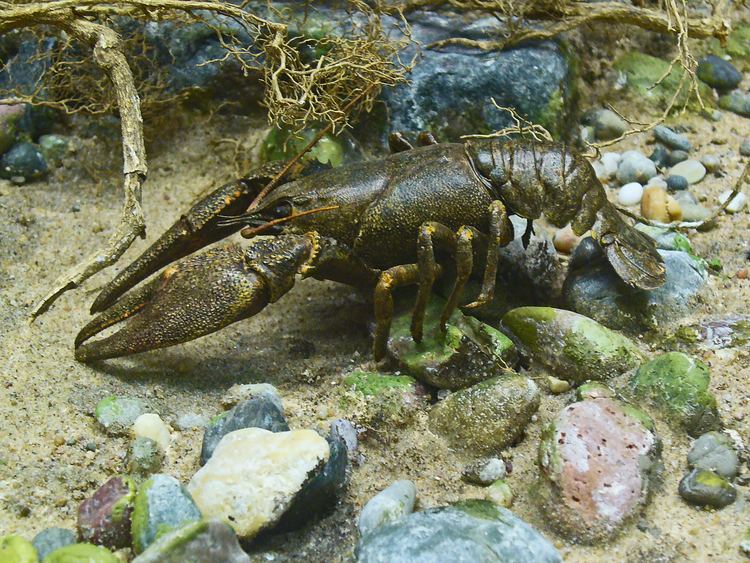
Documentation of the consumption of A. astacus dates back to the Middle Ages, when it was popular among the Swedish nobility, spreading to all social classes by the 17th and 18th centuries due to its ready availability. The crayfish are collected from the wild in traps, a practice which is being replaced by more intensive aquaculture of the signal crayfish in man-made ponds. The consumption of crayfish is an important part of traditional Scandinavian culture, including the crayfish party or kräftskiva, a feast to mark the end of summer.
Hundreds of smaller or larger lakes were once found in the northern Moldavia, used for growing A. astacus meant for consumption during the extended fasting periods of the Orthodox Christian calendar. The area of the former Dorohoi County was one such area, and this legacy was visible in the county's historical coat of arms, featuring an A. astacus (Rmn. rac).
Astacin
Astacins are a family of digestive enzymes, discovered in the 1990s, which were first isolated from Astacus astacus. More than 20 enzymes of this group have since been discovered in animals from Hydra to humans.
